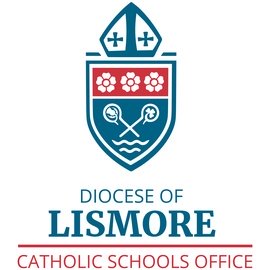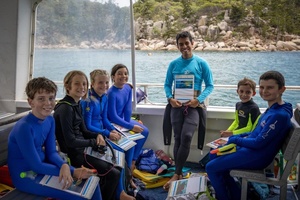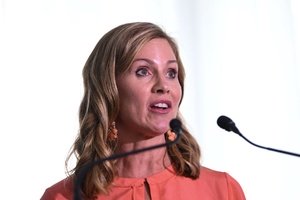So says Jarrod Carter, senior educational data analyst at Catholic Education South Australia, whose new paper for libertarian think tank The Centre for Independent Studies warns a ‘standardised approach’ to certifying high-quality instructional materials is urgently needed.
Carter says it’s a problem that classroom materials are not required to meet a defined standard, nor are they validated and given a green tick by relevant educational authorities.
This only intensifies the workload burden for teachers, and creates variability in practice within and between schools, he suggests.
Without an overarching quality assurance system, Carter says teachers are forced to navigate their way through a plethora of instructional resources online.
Many of these are unregulated, are tied to various educational theories and may involve ‘unproven’ materials, he flags.
This ‘surge’ of open access resources is presenting a real challenge to policymakers and schools, he contends, with online marketplaces now signifying a global trend towards unvetted and unregulated instructional materials.
“A study from the United States found that when implementing state-based standards, Google searches were the primary resource for almost all teachers surveyed, with many also routinely using unregulated online marketplaces such as TeachersPayTeachers.com for curriculum planning.
“Similarly, survey findings from Australian teachers highlight significant gaps in system or departmental support for adopting evidence-based curriculum resources,” Carter writes.
A recent survey from the Grattan Institute found that less than 30 per cent of Australian teachers were provided, or had help with selecting, instructional materials from school leaders.
About a third were provided no instructional materials at all from their school.
Less than half reported there was an expectation that teachers would use the same instructional materials consistently across a learning area.
“With evidence suggesting more than 90 per cent of Australian teachers do not feel they have adequate time to prepare lessons, it is hardly surprising that teachers often resort to unregulated or unvetted sources,” Carter adds.
Highlighting the case of literacy intervention program Reading Recovery, which was widely adopted and invested in – despite lacking a solid evidence base and relying on the discredited Whole Language approach to literacy – Carter argues that well-intended, but ultimately bad, investments can result when there’s no system in place to ensure quality research translates into practice.
He proposes an ‘eco-system’ of high-quality instructional materials (HQIM) be created, one that would involve:
- The establishment of an Australian Standard for HQIM;
- The creation of an ‘HQIM Hub’ for independent and transparent review of instructional resources, which mirrors the example of EdReports in the US; and,
- The encouragement of research contributions to the eco-system.
A body such as AERO should be tasked with leading a ‘national process’ to develop the national standard for HQIM, Carter proposes.
This would be akin to AITSL leading the consultation process for Professional Standards for Teachers, he adds.
“Certifying instructional materials is an important reform needed to assist Australian schools access and leverage resources,” Carter reiterates.
“It is a tangible policy choice to support more consistent and evidence-based approaches to teaching.
“Overseas examples have demonstrated that a structured evaluation of HQIM holds promise for elevating resource quality, simplifying decision-making processes, and promoting a culture of continuous improvement in schools.”
The call echoes that made by Amy Haywood and Lucy Jongebloed last week, who laid out the need for a robust process to judge the quality of curriculum resources used in our schools.
“Australia does not need to reinvent the wheel – the US already has a highly successful national model,” they flagged.
EdReports is an independent, not-for-profit organisation that assesses the quality of comprehensive curriculum materials against specific criteria (including Focus and Coherence, Rigour and Usability) and publishes the results.
As Carter explains, materials are reviewed against a point system for both grade-level standard alignment and student engagement opportunities.
“The process results in detailed reports available online, allowing users to search and filter results based on domain, year level, and review performance…
“EdReports proactively identifies materials for evaluation through market research and recommendations, ensuring comprehensive and unbiased reviews,” he writes.
Meanwhile, in the absence of government action, a new not-for-profit resource hub has already set out to significantly bolster Australian education by providing all teachers with a bank of free, evidence-aligned curriculum materials.
Designed to pool the expertise of teachers from across all sectors, Ochre Education is quickly building an online depository of knowledge-rich, comprehensive, highly-sequenced resources that can be adapted by educators regardless of their context.
Ochre’s co-CEOs Caroline Reed and Reid Smith told EducationHQ last year that the platform addresses a significant fault in the current system:
“We’ve got a really small proportion of teachers teaching in schools that have a comprehensive bank of curriculum resources to draw from, and a large proportion are spending more than 10 hours a week developing instructional resources,” Reed said.
“We asked [teachers] whether they would find [something like Ochre] useful, and we had almost 100 per cent saying that they would find it extremely or somewhat useful.”
As for user feedback, teachers have responded along the lines of, ‘I’ve been waiting so long for something like this’, Reed said.
“‘All my Chirstmasses have come at once’ is an actual quote.”















